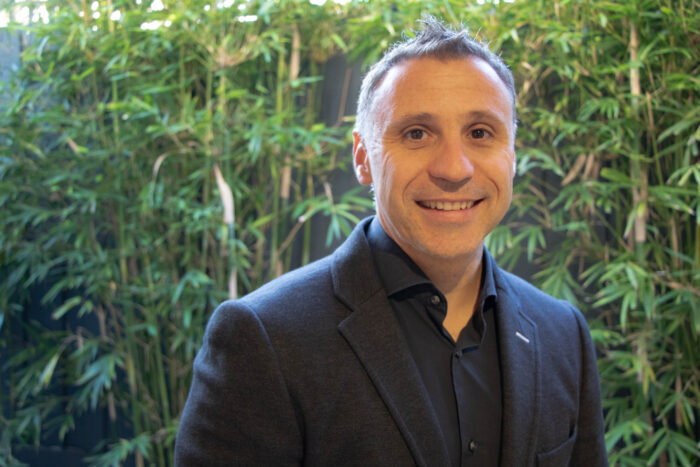The human + machine model for the future of the workplace
- HRM Asia Newsroom

Welcome to AI’s new inflection point – as generative AI continues its rapid evolution and integration into daily business rigour, strategic considerations made by business leaders must change in tandem if they are to prepare their organisations for a future that is generative-AI driven.
After all, latest research from Accenture shows that 40% of all working hours are expected to be impacted by Large Language Models (LLMs) such as GPT-4, a clear and early signal that employee hours can now be transformed further into more productive activities. Evidently, astute business leaders are already recognising the significance of this shift, with IKEA recently announcing their intent for call centre workers to undergo training that will see them evolve into interior design advisors, leaving the more run-of-the-mill customer queries to AI bots.
Looking ahead at the fast-paced evolution of technology
Generative AI integration is no longer a good-to-have, but a clear mandate for organisations as they transition into the new frontier of the workplace. In a recent pulse survey, we found that more than 98% of global executives agree that AI foundation models will play an important role in their organisations’ strategies in the next three to five years.
Whilst it is heartening to see that business leaders are taking the advent of this technology seriously, it is crucial that organisations act immediately on this intent, even if it is to simply evaluate the role of the technology in their business. Failing to capitalise on this opportunity means organisations risk falling behind on leveraging nascent and emerging technology to solve complex problems and drive innovation.
Meanwhile, questions on the type of skillsets required for the present and future workforce requires immediate attention and answering. How should employees evolve, and what strategies should business leaders adopt to fit the changing demands of the workplace?
The human + machine model
Addressing this effectively first requires an alignment of expectations. Generative AI, in all its manifestations present and future, has untold potential to reshape every process of work and life. However, harnessing the powers of the technology in an equitable, accountable, and ethical manner means complementing the technology with human sensibilities.

“It is imperative that leaders start investing in training their employees to work differently and start equipping them with the necessary skillsets to work alongside machines, by building technical competencies in areas such as AI engineering and enterprise architecture.” – Gaston Carrion, Managing Director-Strategy & Consulting, Asia Pacific Talent & Organisation Lead, Growth Markets at Accenture.
We should leverage the technology to become our copilots in optimising tasks and augmenting human capabilities, unlocking new growth opportunities, especially in the areas of business process automation and boosting workplace productivity. When done right, new dimensions of human and AI collaboration will radically change how and what types of work will be done. While some jobs can become fully automated, most jobs will be transformed, and many more new ones will be created.
Therefore, it is imperative that leaders start investing in training their employees to work differently and start equipping them with the necessary skillsets to work alongside machines, by building technical competencies in areas such as AI engineering and enterprise architecture. Importantly, while generative AI has the potential to automate repetitive processes, it also has the potential to impact higher-level tasks and industries, meaning that all job functions regardless of hierarchy levels across the entire organisation will expect to see disruption in one form or another by the impact of generative AI.
However, we recognise this is often easier said than done, because even as new innovations have obvious advantages, the biggest challenge often facing business leaders is diffusing them across the organisation, especially since generative AI has proven to be incredibly disruptive to current ways of working.
A people-first approach to generative AI and technological reinvention
No one should be left behind in the generative AI game – even domain experts who understand how to apply data in the real world will still need enough technical knowledge of how LLMs work to have confidence in using them as an effective “workmate”.
In this nascent stage, experimentation will be the name of the game for most organisations. As is with all emerging technologies, generative AI is not without its challenges, and businesses will need to be realistic when weighing up implementation, paying closer attention to possible implications on the IT and technological infrastructure of the organisation and its culture, as well as putting in place a responsible AI compliance regime.
Adopting an entrepreneurial spirit to quickly take advantage of smaller opportunities such as using consumable models and applications can help businesses realise quick returns early on. However, the end goal should be focused on a technological reinvention to their digital core, which means reinventing the enterprise and developing new business and organisational strategies with these emerging technologies in mind.
Undoubtedly, this would require profound changes to talent strategies and trainings set in place to ensure that generative AI will continue to augment rather than downplay the human capabilities of the organisation. However, chugging away diligently will allow businesses to build a well-oiled model that maximises owned data to reap continuous, tangible value in areas such as customer engagement, product development, and service offerings in an ethical, transparent, and efficient manner.
About the author: Gaston Carrion is Managing Director-Strategy & Consulting, Asia Pacific Talent & Organisation Lead, Growth Markets at Accenture.






